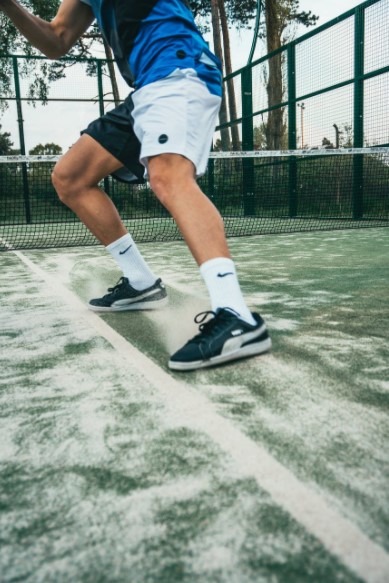If you’ve been taking part in physical activity and find yourself experiencing excruciating pain in your shins, chances are that you are suffering from a condition known as shin splints. Shin splints are a common injury that affects people who routinely engage in sports and activities like running. The condition presents itself as a throbbing ache in the legs after an exercise session.
While this problem is relatively common, it can be challenging to deal with. However, there are several interventions available that can help alleviate pain and symptoms, such as compression socks for shin splints.
If you’re a runner facing a similar pain or want to learn more about it, this article will be the ultimate guide. Read ahead as we talk about the basics of shin splints and how compression socks can help treat them.

An Overview Of Shin Splints
First things first, you need to understand what shin splints are and how you can identify if you’re suffering from them.
Shin splints are primarily caused due to the inflammation of tendons, muscles, and bone tissues that can take place in both legs or just in one. This inflammation can be caused due to the leg muscles becoming overworked, because of which pain and soreness is felt in the front part of the lower leg. If you suddenly increase the frequency and intensity of any physical exercise, there is a high risk of developing shin splints. While not all lower leg pains are indicative of this problem, some common symptoms to watch out for include tenderness, radiating pain in the inside of your leg, and not being able to flex your toes towards the shin without pain.
There are certain preventative measures and remedies that can help athletes and runners deal with this problem. While proper running gear and stretching exercises help, compression socks can be extremely helpful, and we are about to explain how.
How Compression Socks Treat Shin Splints
Compression socks utilize the concept of compression therapy to treat and combat the symptoms caused by several venous disorders and are particularly useful for treating shin splints. They offer graduated compression, which means that they are tight around the ankles and loosen as you go up towards the calf. This helps push blood in the right direction towards the shin, increasing oxygenation, and circulation. Oxygenated blood helps break down the lactic acid, which is built up due to physical activities, which helps reduce muscle soreness and inflammation.
TIP: You’re not going to want to miss these great custom casual dress socks from Custom Sock Lab. Definitely check them out.
The elastic fabric is perfect for support and holds the muscles together, which reduces the pressure felt during exercise. With every step you take during an exercise session, each of your muscles experiences a certain degree of trauma and pressure. Because shin splints are also a stress-related injury, the extra support will reduce the impact felt by the muscles, thereby preventing injury.
Therefore not only do compression socks provide support to the shin muscles during exercise but also help prevent inflammation and improve blood flow for better healing.
The Different Types Of Compression Socks
Compression socks come in varying levels of compression, and knowing the right one is crucial if you want to reap maximum benefits. If the sock is too tight, you will end up feeling uncomfortable, but if it’s not snug enough, it will not offer any advantage in treating shin splints. We usually advise users to start with the lowest level of compression and increase it to find the best fit.
You should also know that there are two ways to benefit from compression, through compression socks or compression sleeves. If you want to provide support to your ankle or arch, then go for socks, but if you’ve injured your upper calf or shin, a sleeve works just fine. If you are recovering from shin splints and will not be running or exerting yourself, then opt for compression socks to prevent a swollen ankle due to tightness in the lower part of the sleeve.
How Long Should Compression Socks Be Worn For?
Compression socks are built to be breathable, thin, and lightweight, making them easily wearable for long periods of time. Therefore, you can wear them both during exercise and afterward, given that you don’t sleep in them.
Several people wonder whether compression socks can be worn even if they are not suffering from shin splints. The answer to this is that yes, they can, because compression socks are not only used for treatment but also prevention of shin splints.
If worn routinely, compression socks help increase blood flow, helping athletes recover from muscle fatigue faster, improving their performance as well. In fact, several athletes claim that wearing compression socks after strenuous physical activity improves the recovery time from shin splints. Because recovery time is faster, athletes are able to bounce back to training faster as well.
Key Takeaways
If you’re a regular athlete, the chances are that your muscles will be going through some serious wear and tear, causing injuries like shin splints. Not to worry because among the several treatment options available, wearing compression socks is worth a shot.
Not only can they aid in the recovery process, but they are also a great option to prevent shin splints from developing. However, if you face a chronic issue, our recommendation would be to consult a doctor who can advise on a treatment plan, including the right compression socks to support it.
I’m a 20-something stay-at-home mother and wife. I have an amazing husband, a beautiful daughter, two loving dogs, and a lazy cat. I wouldn’t change my life for anything! I love to read, listen to music, cook and blog!

Speak Your Mind